|
|
|
 |
 |
 |
 |
Security of Nuclear Information
IAEA Nuclear Security Series, 2015, 54 p.
This publication provides guidance on implementing the principle of confidentiality and on the broader aspects of information security (i.e. integrity and availability). It assists States in bridging the gap between existing government and industry standards on information security, the particular concepts and considerations that apply to nuclear security and the special provisions and conditions that exist when dealing with nuclear material and other radioactive material.
|
Specifically it seeks to assist states in the identification, classification, and assignment of appropriate security controls to information that could adversely impact nuclear security if compromised.
Extraído de: http://www-pub.iaea.org/books/IAEABooks/10774/Security-of-Nuclear-Information |
 |
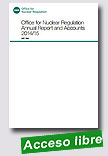 |
Office for Nuclear Regulation Annual Report and Accounts 2014/15
Office for Nuclear Regulation (ONR - UK), June 2015, 100 p.
ONR regulates the safety and security of nuclear licensed sites in the UK. These include the existing fleet of operating reactors, fuel cycle facilities, waste management and decommissioning sites and the defence nuclear sector. In addition, it regulates the design and construction of new nuclear facilities and the transport of nuclear and radioactive materials, and work with the international inspectorates to
|
ensure that safeguards obligations for the UK are met. ONR also cooperates with international regulators on safety and security issues of common concern, including associated research.
The nuclear operators are responsible for the safety and security of their facilities. ONR’s role, which is captured in our mission statement, is to provide efficient and effective regulation of the nuclear industry, holding it to account on behalf of the public. ONR uses a wide range of regulatory tools to positively influence those it regulates, and to encourage the achievement of sustained excellence and continuous improvement in safety and security performance across the nuclear sector. The Annual Plan for 2014/15 set ONR’s priorities in the context of this role.
Extraído de: https://www.gov.uk/government/uploads/system/uploads/attachment_
data/file/438019/onr-ara-isbn-9781474121156-print.pdf
|
 |
 |
Spent Fuel Storage Operation-Lessons Learned
IAEA TECDOC, 2013, 94 p.
Spent fuel storage is an interim step in the back end of the nuclear fuel cycle which facilitates spent fuel reprocessing and recycling of products or direct disposal. To date the direct disposal of fuel has not been exercised, but there are a number of projects which are in an advanced stage of meeting this goal. The general trend, however, has been to ever increasing dwell times in storage and durations in excess of 100 years are now being envisaged. The current position is far
|
removed from early lifecycle plans which were mostly based on reprocessing spent fuel in the short term. At-reactor (AR) storage was, therefore, based upon short dwell times of <5 years and in some cases is limited to 1–2 years storage capacity.
Reactor new builds are now based upon a minimum of 60 years storage and some are incorporating the ability for expansion. Current spent fuel storage designs have come a long way from those on the drawing board back in the late 1940s and incorporate previous learning and the requirements of national and international safety standards which have been progressively introduced.
The recent incident at Fukushima has seen a review of the robustness of spent fuel storage and its ability to respond to beyond design base accident scenarios. This may see further iterations to key safety features such as cooling supplies.
Over the past 20–30 years the role played by dry storage systems in filling the gap between available AR storage and the availability of back end services has increased and now represents around 20% of all stored fuel. The main attractions of dry storage are its passive cooling capability and reduced up-front costs through the ability to add incremental capacity.
With ever increasing storage durations the challenge for older storage systems is the ability to demonstrate that they are still fit-for-purpose; i.e. demonstrating that the storage system meets the latest regulations. To date redundancy in design has helped many operators meet these challenges. To ensure continued operation it is critical to have in-place robust ageing management plans.
The main objective of this technical document is to create a resource for Member States engaged in managing spent power reactor fuel highlighting practices to emulate and situations to avoid.
Extraído de: http://www-pub.iaea.org/books/IAEABooks/10575/Spent-Fuel-Storage-Operation-Lessons-Learned
|
 |
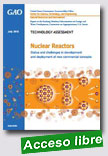 |
Energy demand in the United States is expected to continue to grow over the coming decades, and DOE considers nuclear energy to be one way to help meet this increased demand without producing air pollution. However, the current domestic commercial nuclear reactor fleet, consisting of 99 large LWRs that provide about 20 percent of U.S. electricity, is aging, and
|
some reactors have shut down in recent years. LWRs use light, or ordinary, water to cool the reactor. New reactor concepts are under development as alternative energy options. Light water SMRs have some similarities, including the coolant used, to the existing large LWRs, and advanced reactors differ more from the large LWRs. Both new reactor concepts differ from the existing large LWRs in potential applications.
GAO was asked to conduct a technology assessment of these new reactor concepts in the United States. This report discusses (1) the status of light water SMR and advanced reactor concepts under development; (2) the intended benefits of these new reactor concepts; and (3) the challenges associated with developing and deploying these new types of reactors. GAO reviewed documents from DOE and NRC, and interviewed DOE and NRC staff as well as industry representatives involved in developing reactors. GAO, with the assistance of the National Academies, convened a meeting with a group of 20 experts on nuclear reactor development and related issues to provide additional information.
Highlights
Extraído de: http://www.gao.gov/assets/680/671686.pdf
|
 |
 |
Nuclear New Build: Insights into Financing and Project Management
Nuclear Energy Agency (NEA), 20/07/15, 254 p.
Nuclear new build has been progressing steadily since the year 2000, with the construction of 94 new reactors initiated and 56 completed reactors connected to the grid. Among these new reactors are some of the first generation III/III+ reactors of their kind. Drawing on a combination of conceptual analysis, expert opinion and seven in-depth case studies, this report provides policymakers and stakeholders with an overview of
|
the principal challenges facing nuclear new build today, as well as ways to address and overcome them.
It focuses on the most important challenges of building a new nuclear power plant, namely assembling the conditions necessary to successfully finance and manage highly complex construction processes and their supply chains. Different projects have chosen different paths, but they nonetheless share a number of features. Financing capital-intensive nuclear new build projects requires, for example, the long-term stabilisation of electricity prices whether through tariffs, power purchase agreements or contracts for difference. In construction, the global convergence of engineering codes and quality standards would also promote both competition and public confidence. In addition, change management, early supply chain planning and "soft issues" such as leadership, team building and trust have emerged over and again as key factors in the new build construction process. This report looks at ongoing trends in these areas and possible ways forward.
Extraído de:
http://www.oecdnea.org/tools/publication?query=&div=&lang=&period=6m
&sort=title&filter=1#p7195
|
 |

|
Joint Comprehensive Plan of Action
European External Action Service (EEAS), 14 July 2015, 18 p.
The E3/EU+3 (China, France, Germany, the Russian Federation, the United Kingdom and the United States, with the High Representative of the European Union for Foreign Affairs and Security Policy) and the Islamic Republic of Iran welcome this historic Joint Comprehensive Plan of Action (JCPOA), which will ensure that Iran’s nuclear programme will be exclusively peaceful, and mark a fundamental shift in their approach to this issue. They anticipate that full implementation |
of this JCPOA will positively contribute to regional and international peace and security. Iran reaffirms that under no circumstances will Iran ever seek, develop or acquire any nuclear weapons.
Iran envisions that this JCPOA will allow it to move forward with an exclusively peaceful, indigenous nuclear programme, in line with scientific and economic considerations, in accordance with the JCPOA, and with a view to building confidence and encouraging international cooperation. In this context, the initial mutually determined limitations described in this JCPOA will be followed by a gradual evolution, at a reasonable pace, of Iran’s peaceful nuclear programme, including its enrichment activities, to a commercial programme for exclusively peaceful purposes, consistent with international nonproliferation norms.
The E3/EU+3 envision that the implementation of this JCPOA will progressively allow them to gain confidence in the exclusively peaceful nature of Iran’s programme. The JCPOA reflects mutually determined parameters, consistent with practical needs, with agreed limits on the scope of Iran’s nuclear programme, including enrichment activities and R&D.
The JCPOA addresses the E3/EU+3’s concerns, including through comprehensive measures providing for transparency and verification.
The JCPOA will produce the comprehensive lifting of all UN Security Council sanctions as well as multilateral and national sanctions related to Iran’s nuclear programme, including steps on access in areas of trade, technology, finance, and energy.
Joint Comprehensive Plan of Action | Annex I Nuclear related commitments
Annex II Sanctions related commitments | Annex II Attachments
Annex III Civil nuclear cooperation | Annex IV - Joint Commission
Annex V Implementation Plan
Extraído de:
http://eeas.europa.eu/statements-eeas/docs/iran_agreement/iran_joint-comprehensive-plan-of-action_en.pdf
|
 |
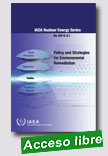 |
Policy and Strategies for Environmental Remediation
IAEA Nuclear Energy Series, 2015, 32 p.
To assure the safe, technically optimal and cost effective management of remediation situations, appropriate policies and strategies are required. This publication describes the goals, time scales, efforts necessary for implementation, cost allocation and the different interests of concerned parties with regard to environmental remediation works. It clarifies the differences between a policy and a strategy, and provides advice to Member States on the typical composition and
|
formulation of such documents. Along with previously published IAEA safety publications on environmental remediation, this publication will help national authorities to recognize the necessity for including environmental remediation as a required component in the planning and execution of nuclear related initiatives. Recent events have shown that the existence of an established policy and strategies on environmental remediation prior to nuclear and/or radiological accidents can be of fundamental importance, as it will among other things facilitate the dialogue to be established with different affected parties.
Extraído de: http://www-pub.iaea.org/books/IAEABooks/10622/Policy-and-Strategies-for-Environmental-Remediation
|
 |
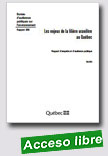 |
Les Enjeux de la Filière Uranifère au Québec - Rapport d’enquête et d’audience publique Bureau D’audiences Publiques sur L’environnement (Canada), May 2015, 626 p.
Le 3 mars 2014, le ministre du Développement durable, de l’Environnement, de la Faune et des Parcs, M. Yves-François Blanchet, a demandé au président du Bureau
d’audiences publiques sur l’environnement (BAPE), M. Pierre Baril, de former une commission dont le mandat consiste à « tenir une enquête et une audience publique sur la filière uranifère » et porte sur l’ensemble du territoire québécois, y
|
compris les territoires couverts par la Convention de la Baie James et du Nord québécois et la Convention du Nord-Est québécois. Dans sa missive, le ministre précisait que la commission commencerait ses travaux le 20 mai 2014 et qu’elle déposerait son rapport le 20 mai 2015.
Dès sa constitution, à la demande du ministre, la commission d’enquête du BAPE a communiqué avec le Comité consultatif pour l’environnement de la Baie-James et le Comité consultatif de l’environnement Kativik pour les associer à l’exercice de consultation publique. Chacune de ces deux instances a créé une commission ayant pour mandat d’examiner les mêmes enjeux et de travailler avec la commission d’enquête du BAPE lorsque les travaux se dérouleraient sur les territoires nordiques conventionnés. C’est ainsi qu’ont été convenues diverses modalités de collaborationentre les trois commissions.
Pour s’assurer de bien cibler les enjeux et les problématiques associés à son mandat, la commission du BAPE a organisé une audience publique en trois phases. Une phase de préconsultation suivie d’une phase de questionnement et d’information, chaque phase comprenant respectivement 20 et 35 séances publiques. Enfin, une dernière phase a permis de recueillir 254 mémoires.
Extraído de: http://www.bape.gouv.qc.ca/sections/rapports/publications/bape308.pdf
|
 |
|
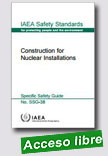
|
Construction for Nuclear Installations
IAEA Safety Standards Series, 2015, 46 p
This Safety Guide provides recommendations and guidance based on international good practices in the construction of nuclear installations, which will enable construction to proceed with high quality. It can be applied to support the development, implementation and assessment of construction methods and procedures and the identification of good practices for ensuring the quality of the construction to meet the design intent and ensure safety. It will be a useful tool for regulatory
|
bodies, licensees and new entrant countries for nuclear power plants and other nuclear installations.
Extraído de: http://www-pub.iaea.org/books/IAEABooks/10723/Construction-for-Nuclear-Installations
|
 |
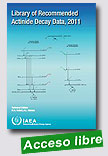 |
Library of Recommended Actinide Decay Data, 2011
IAEA, 2013, 428 p.
Well defined decay data for actinides and their decay chains are important to the nuclear power industry, particularly in the reprocessing of irradiated fuel and the storage of the resulting products and wastes under controlled conditions. A recommended list of 85 actinides and heavy element decay products evolved from the meetings of the CRP, along with justifications for their inclusion in such a comprehensive
|
tabulation. Various efforts were also made to ensure that the planned objectives and ongoing work of the CRP were known to the worldwide community of decay data measurers and evaluators.
Extraído de:
http://www-pub.iaea.org/books/IAEABooks/8948/Library-of-Recommended-Actinide-Decay-Data-2011
|
 |
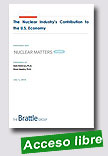 |
The Nuclear Industry’s Contribution to the U.S. Economy
Brattle Group, Inc, July 07, 2015, 25 p.
Nuclear power currently accounts for 19% of U.S. power production, but several factors are at play that may threaten some nuclear generators and could diminish the nuclear industry’s contribution to our electricity supply and the U.S. economy. These factors include limited recognition of carbon as a social cost, as well as market factors such as low natural gas prices, flat electricity demand growth, and transmission constraints. At the request of Nuclear Matters, The Brattle |
|
| |
| |
|
|
| |
| |
|
|
| |
|
|
|
|
|
